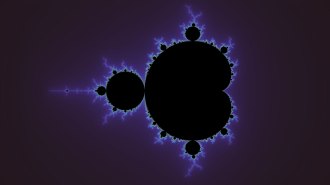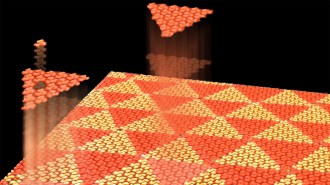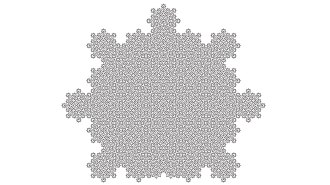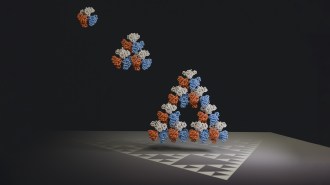Sealed within a transparent, tapered, liquid-filled cylinder, illuminated colored globs slowly rise and fall. Meandering and deforming, their shapes and paths change unpredictably. Invented in 1963, a decorative fixture in many homes during the 1970s, and still in production, Lava Lite lamps are now the object of renewed curiosity.
Indeed, researchers have come up with a novel application of the mesmerizing movements of the lamps globules. They use them as the starting point for generating a sequence of random numbers. Called lavarand, the random-number generator is the tongue-in-cheek work of Robert G. Mende Jr., Landon Curt Noll, and Sanjeev Sisodiya of Silicon Graphics in Mountain View, Calif. (see http://lavarand.sgi.com/).
Random numbers are an immensely valuable commodity, not only for the operation of computer-based slot machines but also for computer simulations and for generating the secret strings of digits required to encode and decode sensitive information in cryptographic systems.
The trouble is that no numerical recipe used by a computer produces truly random numbers. The computer simply follows a set procedure, and restarting the process with the same initial number, or seed value, produces exactly the same sequence of digits.
One way to do better is to vary the seed value randomly. Noll and his colleagues decided that the unpredictably wandering globs in a Lava Lite lamp, operated according to the manufacturers instructions, are a more convenient source of randomness than, say, the sporadic decays of a radioactive element.
While any good chaotic source could be used, we favor Lava Lite lamps in part because they were the source of inspiration for lavarand and in part because they are cool, the researchers admit.
A digital camera periodically photographs a set of six Lava Lite lamps, each one generally in a different stage of activity. The camera adds its own electronic noise to the data, and the resulting image is converted into a string of 1s and 0s. That string is then mathematically manipulated according to a scheme known as the National Institute of Standards and Technologys Secure Hash Algorithm, which compresses and scrambles the 921,600 bytes of the original image into a 140-byte packet of digits. This packet then serves as the seed value for a computer-based random-number generator. Each such value starts a chain of mathematical operations that produces a different string of apparently random digits.
In one application, lavarand serves as the random number generator driving a system for creating haiku. It also provides lottery numbers.






